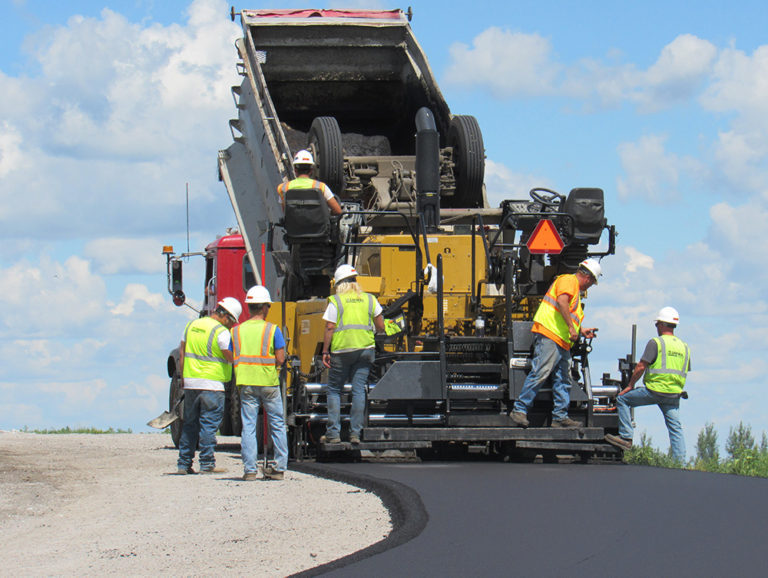Along with worker shortages, supply-chain issues and other challenges facing the construction sector, the arrival of the summer months means construction site owners, contractors and trades need to take extra precautions to protect workers from the consequences of extreme heat conditions.
In recent years, OSHA launched a national emphasis program on heat-illness prevention through which the agency will be doing targeted inspections. At present, however, federal OSHA does not have a heat illness prevention program—although it did launch a notice of proposed rulemaking last year.
For the time being, anything OSHA might cite would likely fall under the general duty clause. Meanwhile, some states, such as California, have a standard in their state program. Some of their recommendations that are especially relevant to construction firms include the following:
- Provide workers with water, rest and shade.
- Allow new or returning workers to gradually increase workloads and take more frequent breaks as they acclimatize, or build a tolerance for working in the heat.
- Plan for emergencies and train workers on prevention.
- Monitor workers for signs of illness.
- Create a written program for conducting ambient temperature monitoring.
Widespread exposure
Across all industries, an estimated 5 million to 10 million U.S. workers are exposed to heat illness annually. Heat illnesses, such as heat stroke, heat exhaustion and heat cramps, are caused by hot environments and are preventable occupational health hazards. Nonetheless, construction firms need to be especially vigilant in implementing preventive measures given the significant proportion of workers who are age 50 and older as well as the growing number of inexperienced workers entering construction as a result of the extensive labor shortage.
Heat injuries occur when the body’s thermostat is out of balance. This means that the body is losing the same rate of heat as it is producing; it is retaining heat, and therefore the body starts to overheat. If the symptoms are not recognized and addressed promptly, an individual might experience various forms of heat illness, ranging from heat rash, muscle cramps and heat exhaustion to heat stroke. Significantly, heat stroke can result in death and requires immediate medical attention.
How does the heat index affect workers?
The body cools itself through perspiration. An example to explain this is to put a little water on your arm and then blow on it. You will feel the cooling effects on your skin. High humidity affects your body’s ability to lose heat through sweating, which is why heat index charts are so important. They show the relationship between temperature and humidity produce a heat index temperature or “feels like” number.
As temperature and humidity rise, so does the risk for heat illness. Today, weather conditions such as temperature and humidity are readily available on any weather app on a smartphone. Use the temperature and relative humidity, and reference the chart below—developed by the National Oceanic and Atmospheric Administration (NOAA)—to determine your risk. However, NOAA devised the heat index values for shaded conditions and light winds. Full sunshine can increase heat index values by up to 15°F. Strenuous work and the use of heavy or specialized protective clothing also have an additive effect.
Table 1 (below) from the U.S. Department of Labor shows heat index temperatures, risk levels and related protective measures that need to be implemented:
Use the protective measures to take at each risk level as the basis of your planning. The plan should address the elements listed in Table 2 (from NOAA) at a minimum:
At construction sites, supervisors and employees must use an effective communication system that allows employees to report to supervisors, co-workers or other designated persons how they are feeling as soon as possible. Some suggestions to speed communication about possible incidents include the following:
- Designate an individual to closely monitor and report frequently on employees’ physical and mental condition.
- Use a “buddy system” so supervisors or a designated individual and coworkers can watch each other closely for discomfort or symptoms of heat illness. Are employees looking and acting normal throughout the work shift?
- Account for the whereabouts of your crew at appropriate intervals throughout and at the end of each work shift (e.g., keep a log of employees on your work crews, including their names, supervisors, work locations and hours worked on a given day).
- Ensure employees who work alone have a special system to monitor them closely by having them check-in periodically and account for their whereabouts (e.g., procedures to follow and a reliable means of communication for employees and supervisors to use).
- Hold brief, frequent meetings (e.g., before and during work).
- Have frequent check-ins by the designated persons and supervisors.
Track the worksite heat index daily, implement the plan and communicate the plan to workers. When the heat index indicates an elevated risk level, the following measures might be implemented at the jobsite.
- Make sure workers drink adequate fluids before, throughout and after their shift to stay hydrated.
- Provide access to shade, air conditioning, fans and/or cool air circulating systems.
- Allocate adequate break time to cool and maintain body temperature.
- Provide employee training to recognize and treat symptoms.
- Conduct frequent surveillance of potential heat illness developing in workers.
ComorbiDities
Recent demographic studies indicate the average age of construction workers is around 43 years old. With age come weight issues, high blood pressure, heart disease and prediabetic and diabetic issues, among other health-related concerns. Furthermore, these workers are at higher risk factors for heat-related injuries. Although employers cannot ask employees directly if they have these comorbidities, they need to understand how they can affect employees and take appropriate precautions.
Thus, contractors need to educate employees about risk factors, the need for hydration and the need to manage their blood pressure, heart disease and diabetic issues to ensure these risk factors do not contribute to heat illness. Accordingly, construction firms should be wary about providing sugared sports drinks to help replenish electrolytes. Instead, they might consider using sugar-free versions, if available, to avoid creating health risks for workers with comorbidities.
Energy drinks may pose additional risks. Many construction firms already ban their use on jobsites. Notably, some medical and health authorities warn that excessive consumption of energy drinks can increase blood pressure and diabetes risks, exacerbate risks of irregular heart rhythms, cause dehydration and kidney damage and contribute to mental-health problems.
Furthermore, these risk factors increase in high-temperature and -humidity environments. Understanding these risks and taking appropriate action can help workers avoid potential issues. At the same time, continued focus on making sure workers stay hydrated before work and on the job with appropriate breaks and fluid intake can help reduce the risk of heat-related illnesses.
By being diligent and taking appropriate precautions, construction firms can protect their workers from heat-related illness, maintain productivity in otherwise difficult working conditions and enhance the overall safety of their jobsites.






